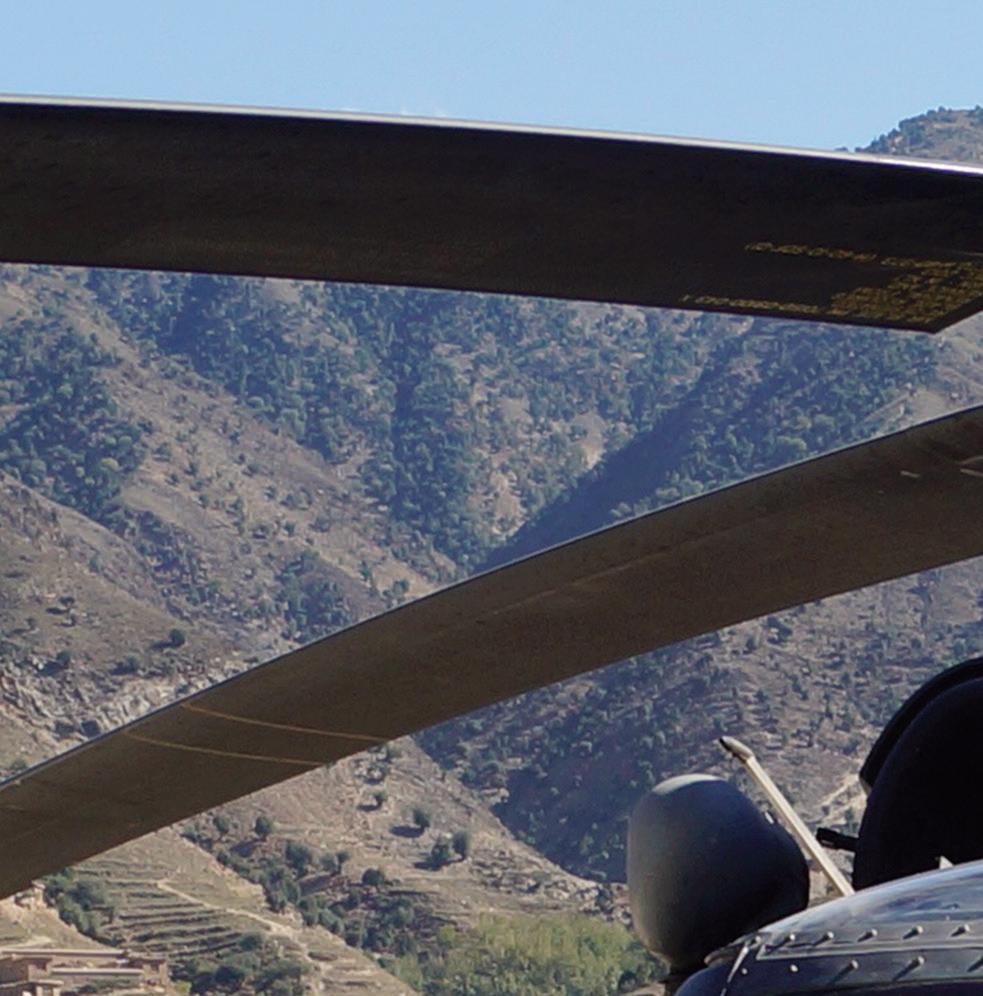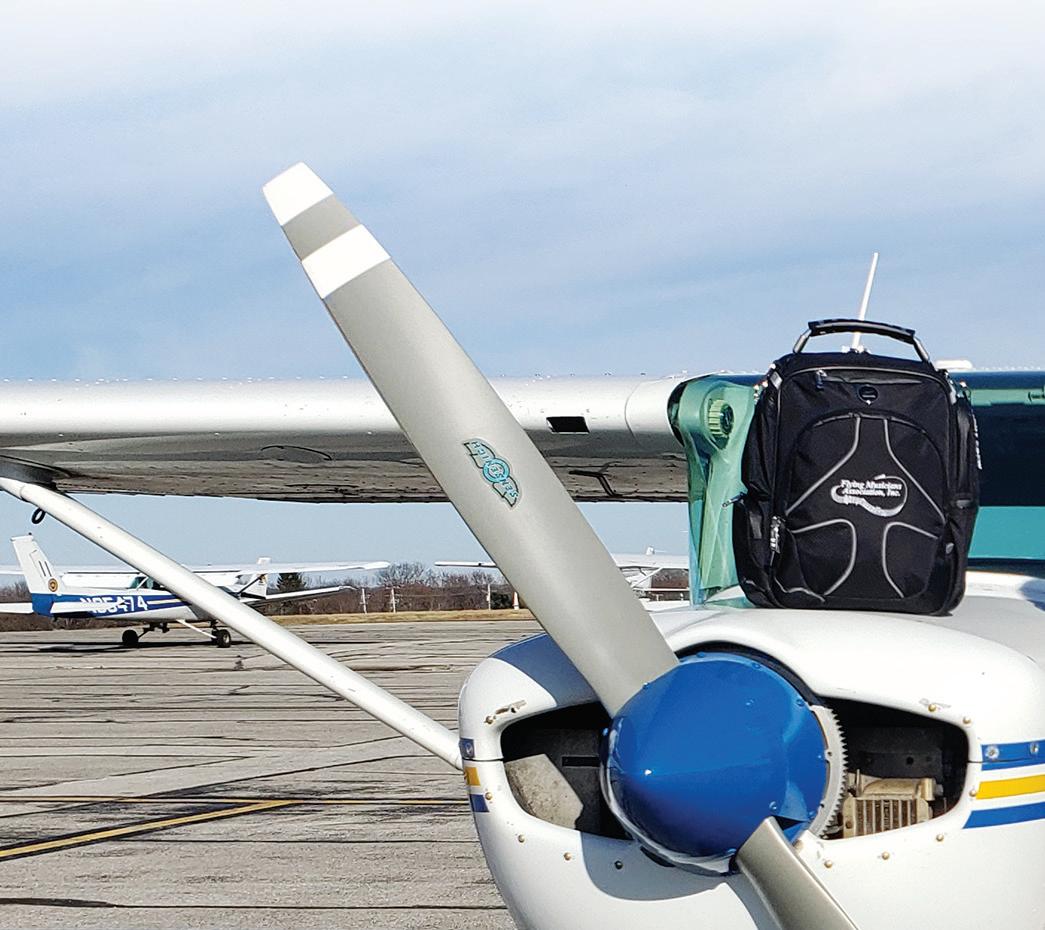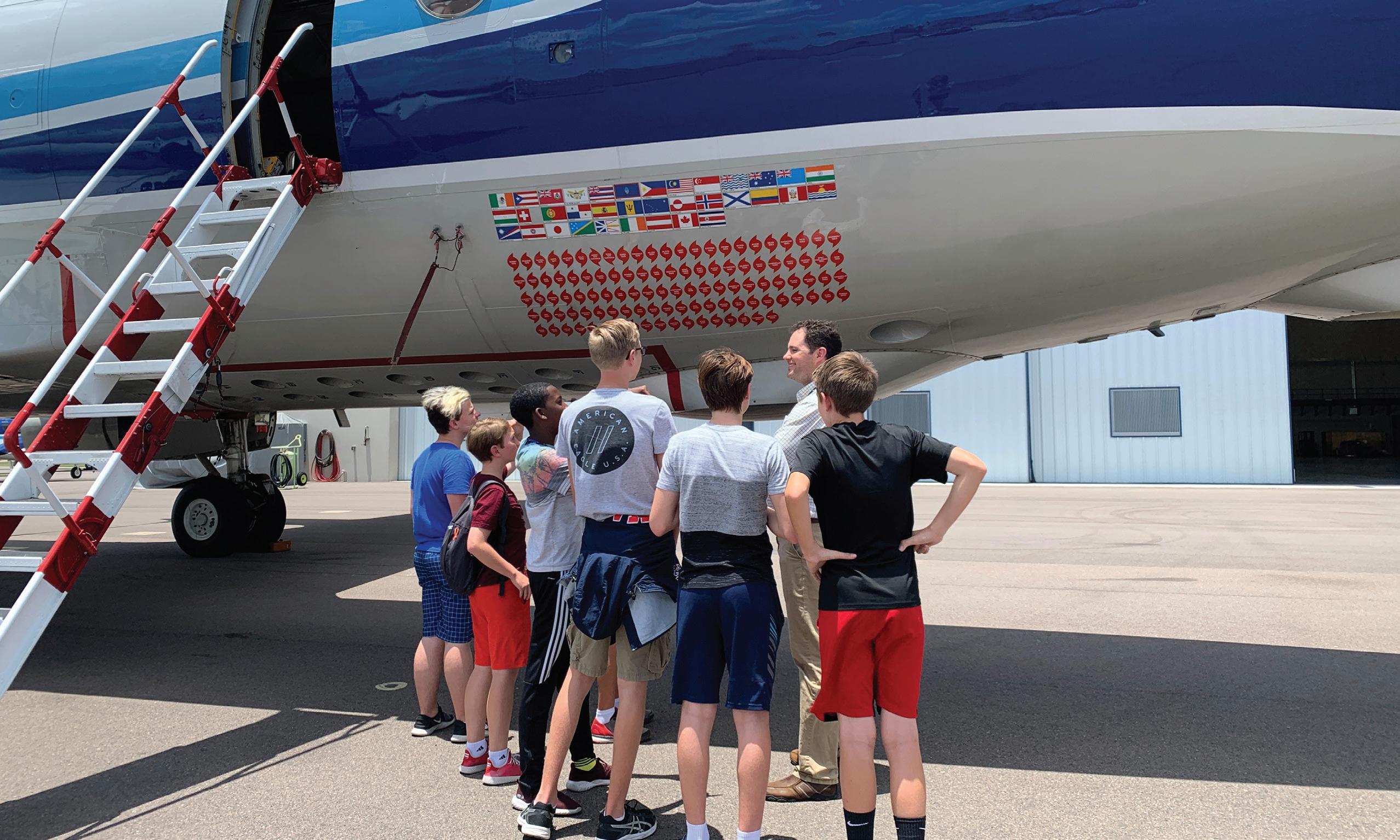
9 minute read
Leading with Love: Strategy Guides Rescue Pilot’s Career
Leading with Love: Strategy Guides Rescue Pilot’s Career
Lt. Col. Annie Driscoll, Air Force Recruiting Service Detachment 1 Commander
by Aimée Bennett
I always knew I wanted to help people. As a young adult, I just never imagined that drive would lead me to a career in aviation.
I was born and raised in Bozeman, Montana, the younger of two children. After high school, I headed to Montana State University, right in Bozeman, to study mechanical engineering and biology…with the goal of helping others by designing prosthetics.
THE ROTC SURPRISE
During my freshman year, my brother convinced me to apply for an Air Force ROTC (Reserve Offi cers’ Training Corps) scholarship. I decided to give it a try, as it sounded like a good fi t: I’d been active in sports in high school, the time commitment was minimal, and importantly, it would pay for my education. I loved it. The ROTC program provided healthy competition – academic and physical – and a tremendously supportive group who shared common experiences and goals.
I also realized I was one of very few females in either my ROTC or mechanical engineering program. To develop a group of girlfriends and have more female presence in my life, I joined a sorority. I loved that, too, and found it to be a fantastic complement to my ROTC experience and academic studies.
I was beginning to recognize that viewing a challenge as an opportunity was a key to feeling fulfi lled. Armed with the right attitude, I was able to not only survive, but succeed and be genuinely happy on all three fronts: ROTC, academic and social.
MY TIPPING POINT
I was enjoying college, still focused on a career in designing prosthetic devices. The summer after my freshman year, I met a retired pilot through ROTC from the local Bozeman chapter of the Daedalians, an organization of military aviators. When I mentioned that I had never considered flying, he encouraged me to give it a try. Having never flown before, I took advantage of the opportunity offered to go up in a small Cessna plane.
I went up in a Cessna. That was it. I was hooked.
That was it. I was hooked. When our short flight landed, I found myself back with the gentleman who encouraged me to take the flight, raving about the beautiful mountains we traversed, the birds taking advantage of thermals to soar, and the third dimension of movement I felt in flight. What an empowering experience! Until I had an opportunity to fly, I would have never thought about aviation as a career. How grateful I am for that one conversation with someone who turned out to be my first aviation mentor. Based on that flight, I applied for, and received, a scholarship from the Daedalians to study for my private pilot’s license.
By then, I knew I would stay in ROTC to serve in the military, and I knew I wanted to fly. I locked in my scholarship for the rest of college, and focused on doing everything I could do to be competitive for a pilot slot when I graduated.
FIND A MISSION YOU BELIEVE IN
One of the sagest pieces of advice I’ve received in my career came from a family relative who had conducted rescue missions as a helicopter pilot in Vietnam. I had successfully competed against ROTC candidates around the country to earn a pilot training spot upon graduation, and was sharing with him my debate over what type of aircraft I should fly. He re-focused me quickly with wise words: Don’t choose a job based on an aircraft. Instead, pursue a mission you believe in. Then, he explained, you can then go to work every day and love what you are doing. As he talked about his most fulfilling experiences saving people in Vietnam, it clicked. I wanted to help people. I loved to fly. I read up on the rescue community, and knew that was my calling.
Upon graduation from Montana State – armed with my degree in mechanical engineering, a minor in biology and my Air Force commission – I completed my initial pilot training, and then landed a spot in helicopter training at Fort Rucker, Alabama. During my time there, I was presented a choice for where I would go after completion of the Undergraduate Pilot Training Program.
As I considered my next step, another great mentor stepped in and suggested I stay on as an instructor pilot (IP) for my first assignment. He knew me, knew my strengths and provided tremendous insight. After the 18-month program at Fort Rucker, I earned my wings as an Air Force helicopter pilot and became a First Assignment Instructor Pilot.
His advice was spot-on. In that position, I obtained excellent flight experience and was given significant responsibility. Moreover, I was directly helping and influencing people. Flying was fun, but I confirmed that what made me tick was interaction with people and helping others learn to fly.
DEPLOYMENT
The year 2010 was a major one for me. After three years as an IP, I transitioned to the HH-60 – the helicopter platform that conducts search and rescue. I married another Air Force officer who is a fighter pilot, and we moved to RAF Lakenheath, England, for operational assignments.
I jumped right into action with my first HH-60 landings supporting combat operations in Libya. Working from a British naval ship, I experienced life among joint forces for several months.
Then came two deployments to Afghanistan, where I had pivotal experiences that shaped my career. There, on the other side of the world, the stunningly beautiful landscape reminded me of Montana. I was able (with the help of an interpreter) to sit down and talk with Afghani troops. I was struck by how connected we all are: how the things we loved, brought us joy and made us human were the same; and how we had similar life experiences despite speaking different languages.
Life was good. Then, during my second deployment in 2014, I was injured from an attack that destroyed a tent next to our helicopter. Wire shrapnel and other material lodged in my right leg and arm. Life changed again. Yet as hard as the injury and the resulting five surgeries have been, I’m strangely thankful that it all happened, as I was about to embark on more adventures.
As I healed, my husband and I moved to Nellis Air Force Base in Las Vegas, where I was assigned to another rescue squadron. I was focused on getting up and flying again, concerned about gaining and maintaining credibility in a flying rescue squadron. Eventually, I had to accept that my injuries would not allow me to fly at that assignment and, potentially, never again. But what I learned during that time changed my mindset and life.
While I was not flying, I was continuously in leadership positions. Without real-time cockpit skills to rely on and assess, I shifted to really get to know the people with whom I was working, learn what made them tick and figure out how to help them pursue their passions. At the same time, I worked to make sure others got to know me, and built trust on a personal, individual basis.
LEADING WITH LOVE
My time at Nellis changed how I approached leadership. When someone asks me today what my leadership strategy is, I confidently respond, “lead with love.” In rescue, a very male-dominated community, a response like that is not common. But it’s very effective – and I believe more people, male and female, are finding that it works for them. As I honed my leadership strategy, I learned first-hand that “when one door closes, another door opens.” Major General Jeannie Leavitt, then commander of Air Force Recruiting Service, recognized my core abilities and brought me to my current position a year ago. Today, I am a commander in Air Force Recruiting Service Detachment 1, located at Joint Base San Antonio-Randolph in Texas.
It turns out I’ve come full circle. This is the job and the mission I always wanted, but didn’t know. Our team helps inform and inspire youth who are interested in a career in Air Force aviation. Looking to increase diversity and attract the best talent, we get to reach out and connect with kids around the country. The rewards and fulfillment are immeasurable. Learn more about careers in U.S. Air Force aviation and about the work Lt. Driscoll is doing now.
I am, again, living my passion, interacting with and helping others, serving as part of a team and leading. And as much as I love flying, I know that I don’t need to be in a cockpit to fulfill my mission.
LIVE YOUR PASSION
This is my story. Yet it’s not just my story. It has been shaped by mentors, my parents, my brother, my supportive and loving husband, and my three wonderful children. Now, it’s my turn to help others find and live their passions. To anyone wondering about working in aviation, I offer two central pieces of advice.
First, never let gender – or your own self – be a roadblock. I know first-hand from my experience in the Air Force that people look first at how well you are doing your job, then as an officer and last at gender. You perform your roles and responsibilities, and that’s it. If you find barriers, voice your issues to those around you whom you trust and allow them to be your advocates.
Second, do whatever you can to talk with those who fly. Look for opportunities to fly. Put yourself out there – even when it’s uncomfortable – and ask questions. After all, you can’t be told “no” if you never ask.












